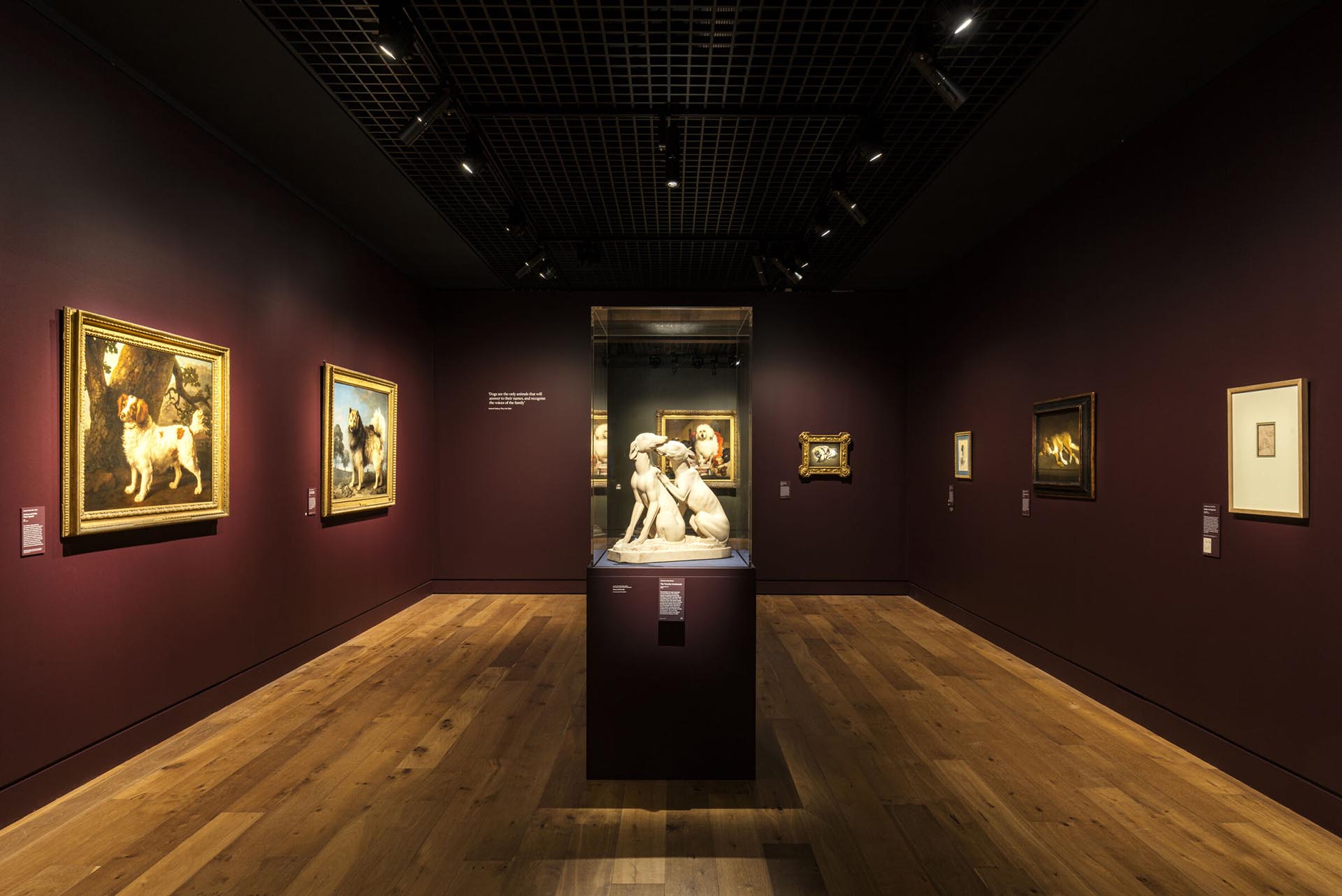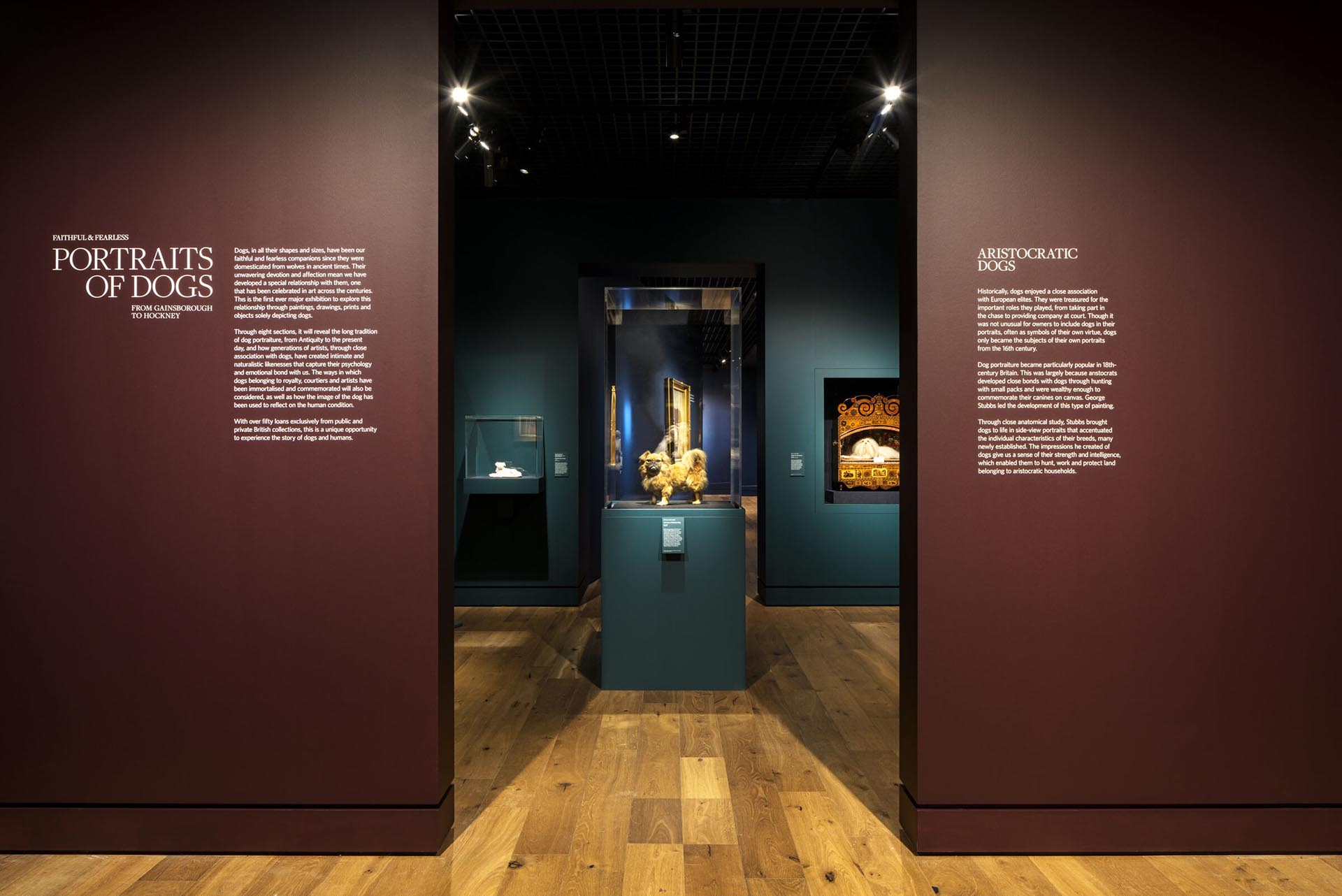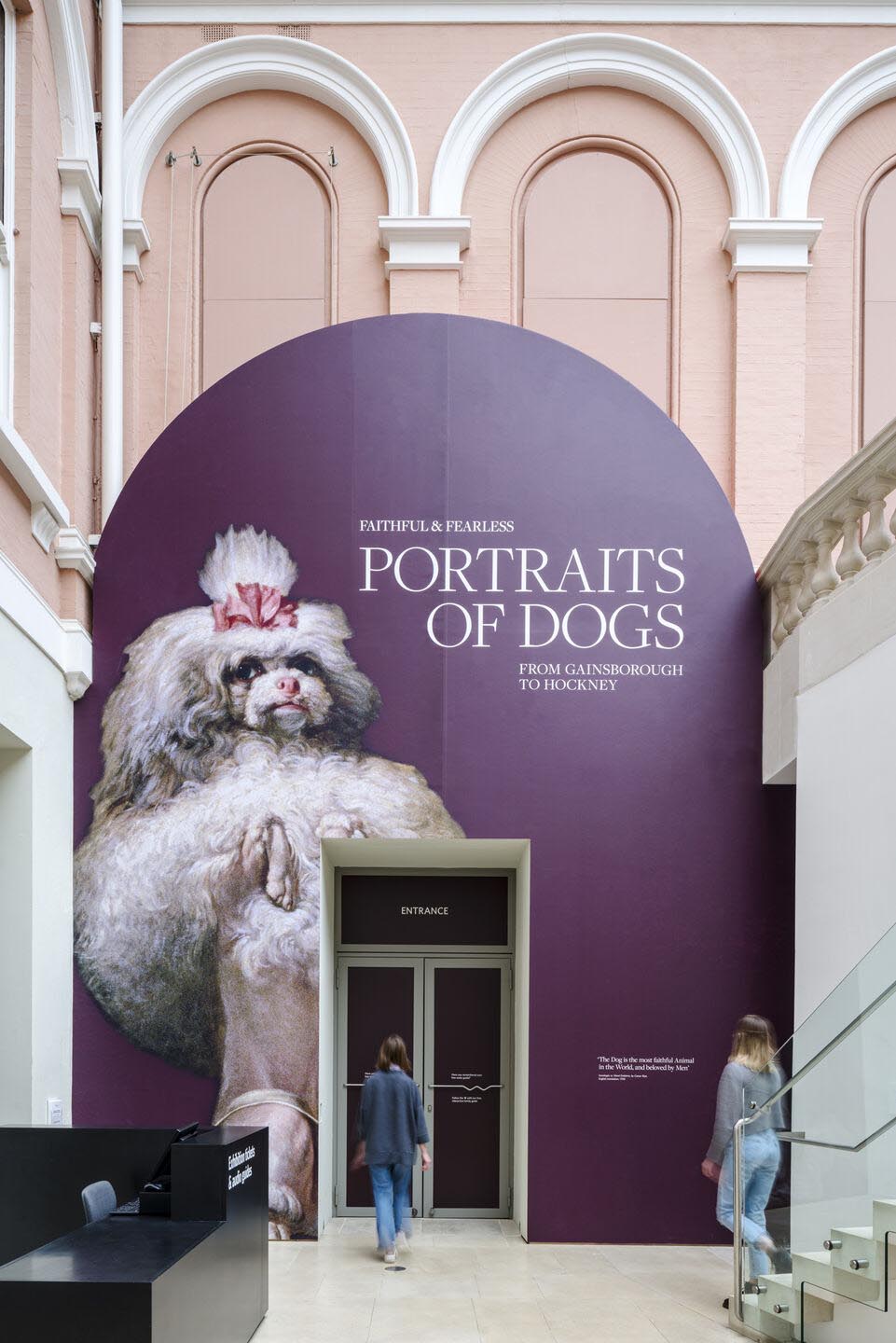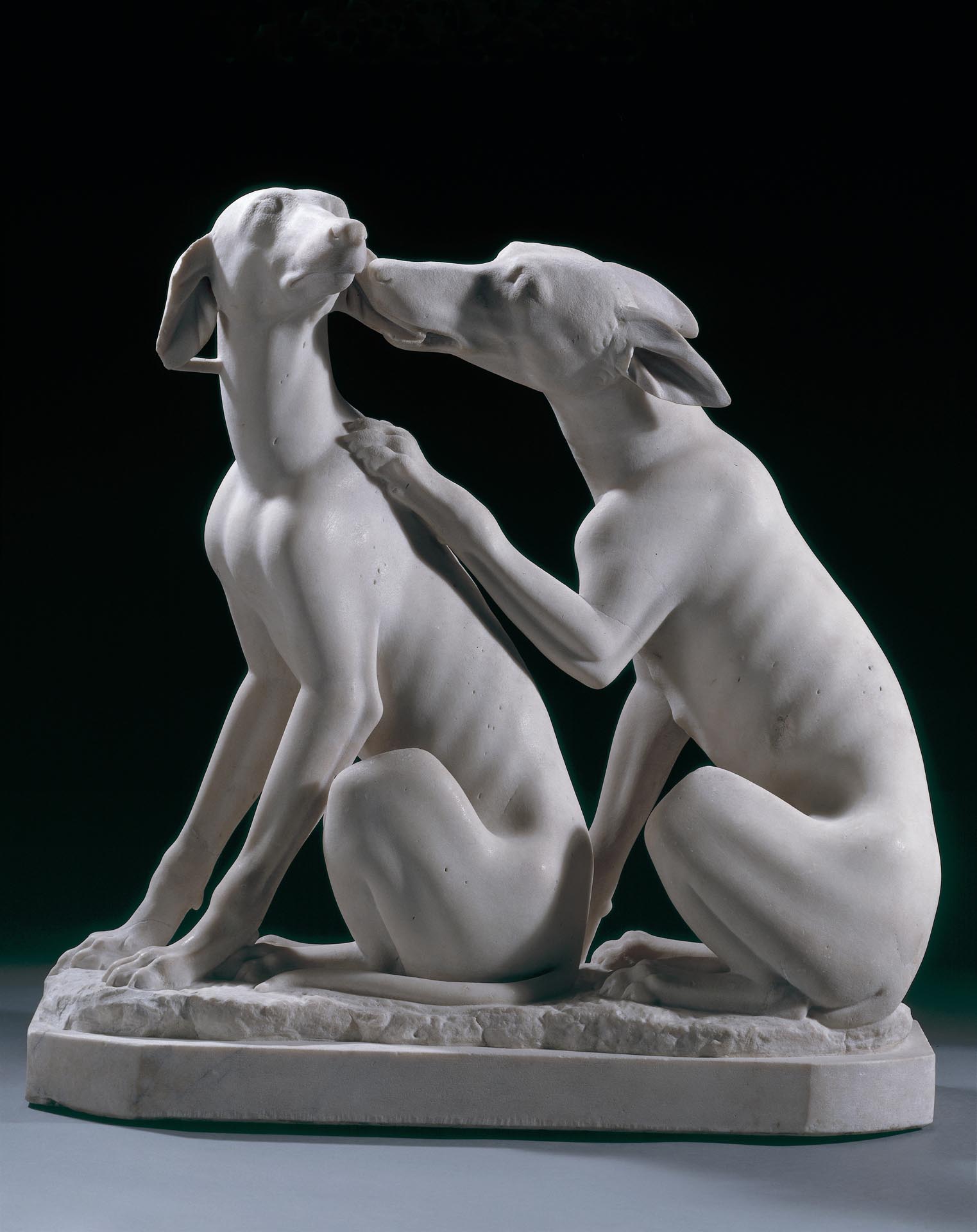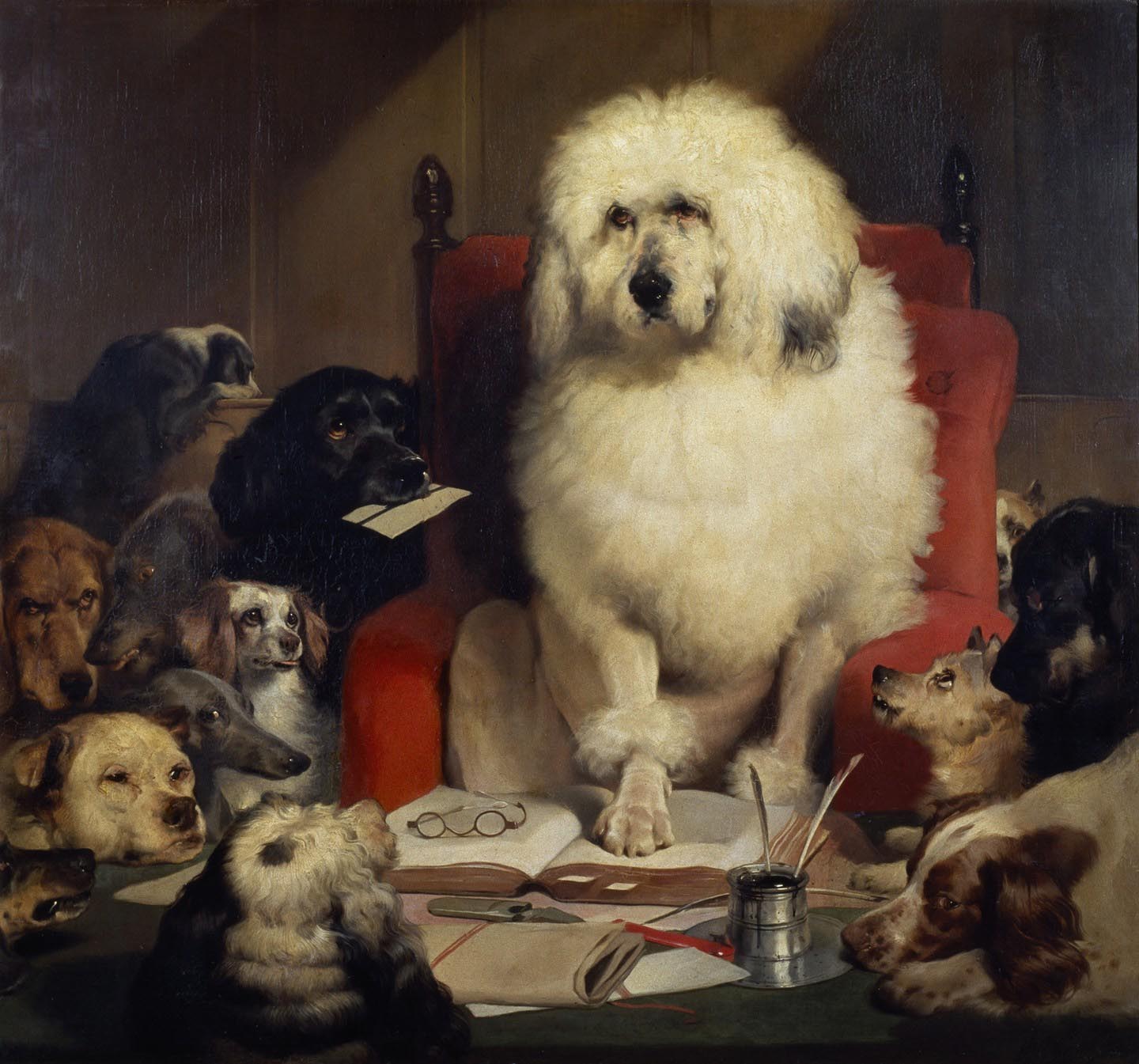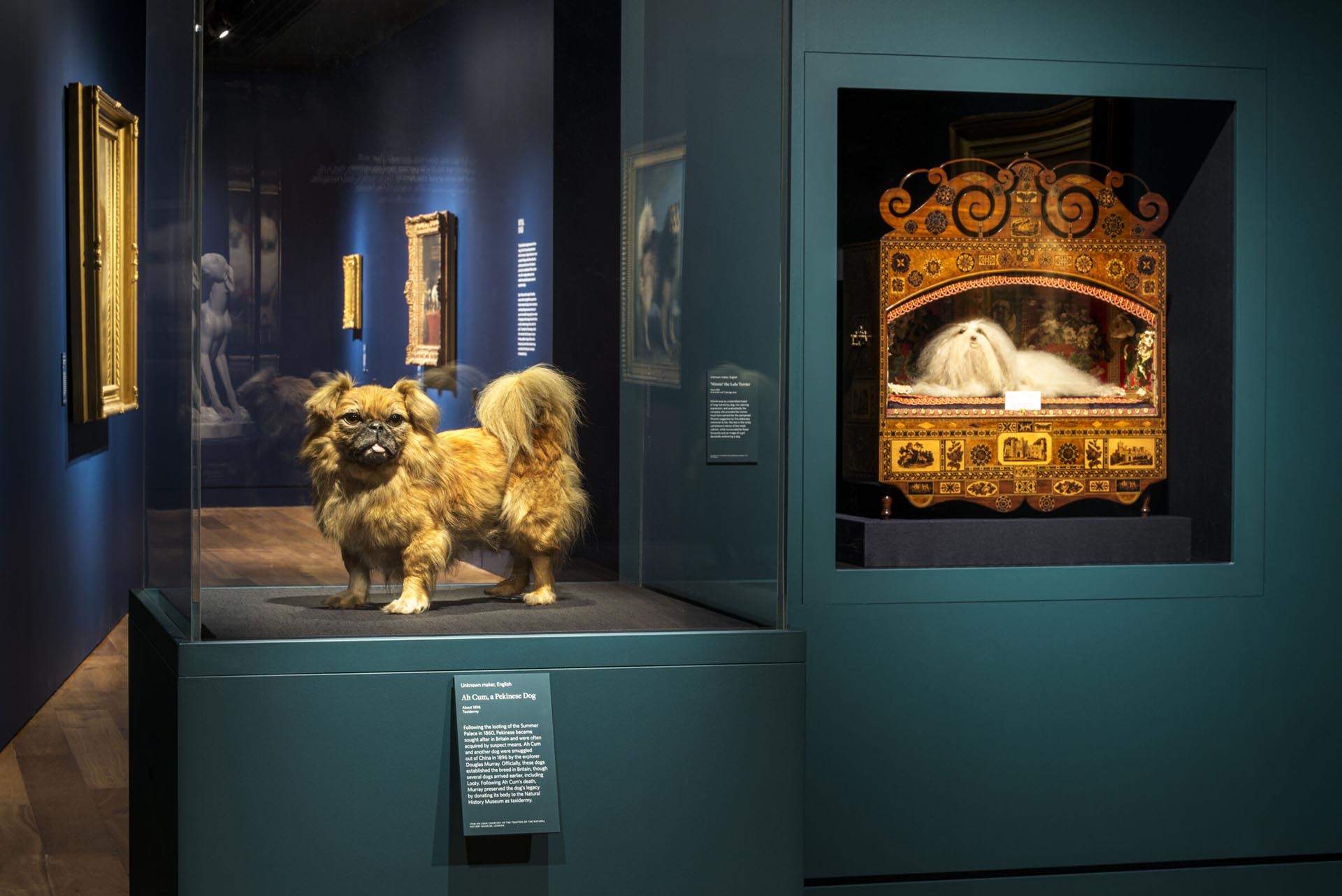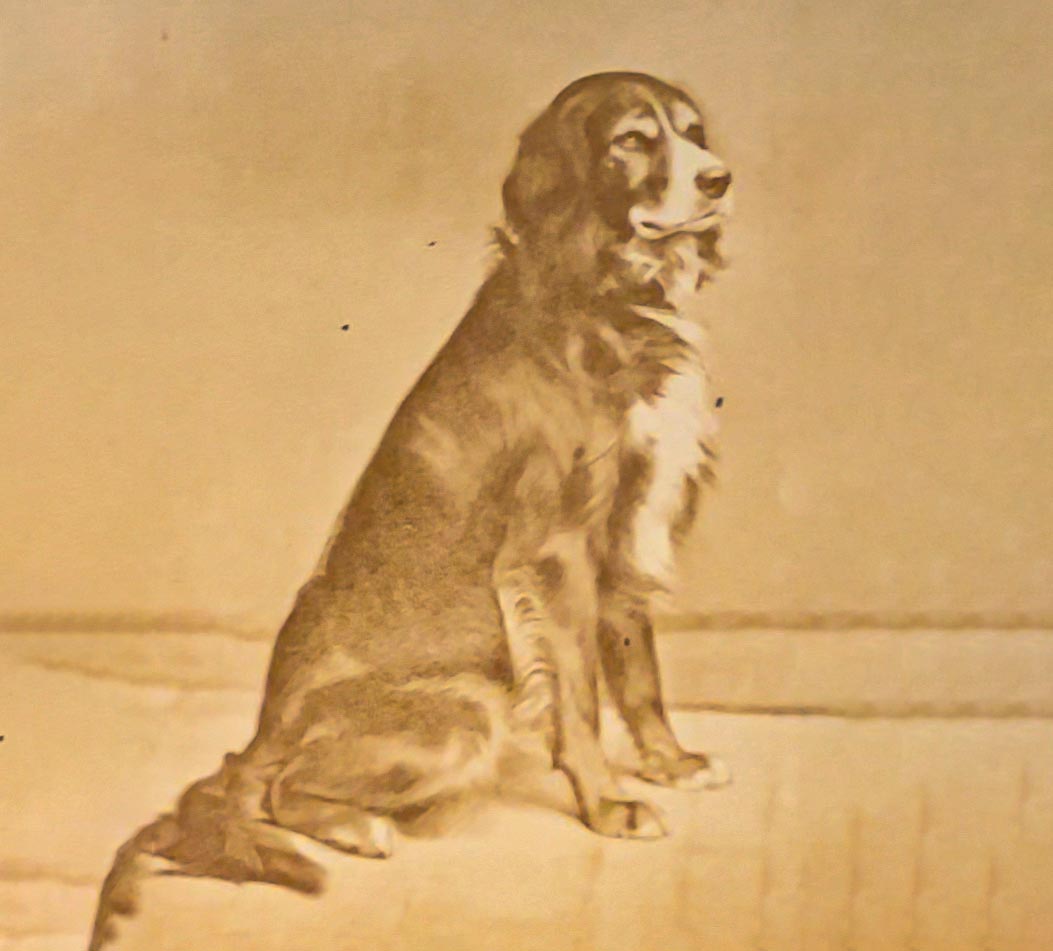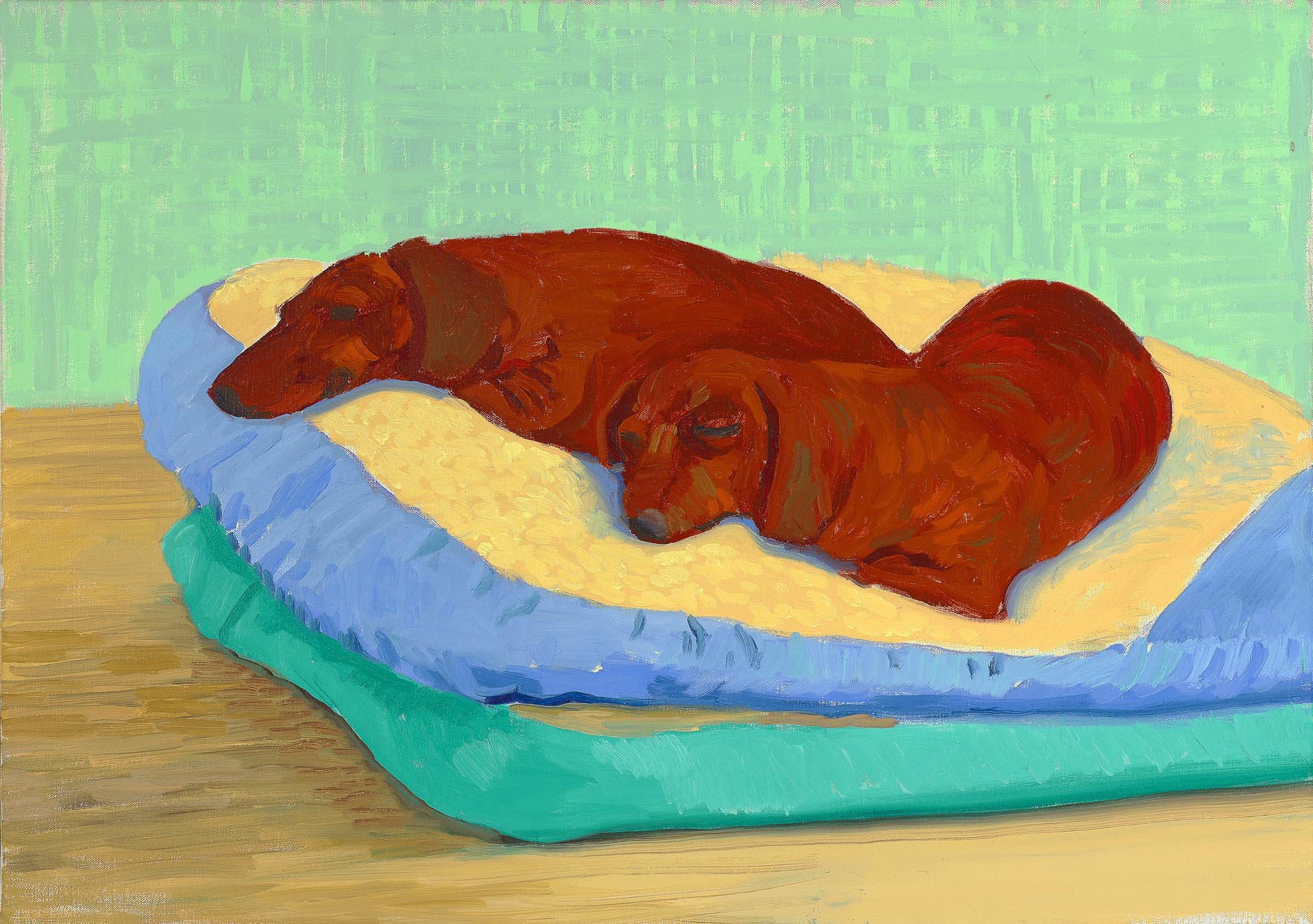Showcased at the exquisite Wallace Collection museum, Portraits of Dogs: from Gainsborough to Hockney exhibition explores our devotion to four-legged friends across the centuries. Through over 50 carefully selected and heart-warming paintings, sculptures, drawings, jewelleries and even taxidermy, the display highlights the unique bond between humans and their canine companions.
Works were deliberately chosen for their lack of human presence, instead letting images of the dogs stand on their own without any ‘destruction’.
A nation of dog lovers
Dog portraiture developed as an artistic genre contemporaneously with its human counterpart – dogs are represented in the earliest cave paintings alongside humans – and it flourished, particularly in Britain, from the seventeenth century onwards when the depiction of family pets (without their owners) became more and more prevalent amongst the British aristocracy.
More than any other nationality perhaps, the British have both commissioned and collected portraits of dogs. This penchant was a guiding principle in selecting artworks for this exhibition, with nearly all loans coming from collections in the United Kingdom.
Dog throughout history
The oldest pieces on view date back to the late first century C.E.: two marble sculptures of Vertragus dogs, a Celtic breed thought to be an ancestor of the greyhound. These dogs were greatly prized by the Romans for their prowess as sighthounds. Another highlight of the exhibition is a Leonardo da Vinci’s drawing of a dog’s paw.
Royal canine
The connection between dogs and royalty also forms a key part of the exhibition, not least Queen Victoria and Prince Albert’s love for their pets. It was them who first documented their large collection of domestic dogs.
You can see a touching portrait of Her Majesty’s Sussex spaniel, Tilco, painted by Edwin Landseer, the great animal painter, in 1838 next to the monarch’s own pencil and watercolour sketches of her and her husband’s other dogs – Eos, the greyhound, Waldina and Waldmann the dachshunds.
Queen Victoria was a devoted supporter of animal welfare. For instant, at a time when tail docking and ear cropping was common, she banned the practice in the royal kennels.
Allegorical dogs
Landseer was also at the forefront of allegorical dog portraiture. His paintings frequently contain moralising undertones that contemplated the changing world of 19th century Britain, one that saw mass industrialisation, urbanisation and poverty. For example, the exhibition displays one of Landseer’s most successful works called “Laying down the Law of Trial by Jury”. The composition uses various dog breeds to characterise court officials and their intersections.
Aristocratic dogs
Just as Queen Victoria did on an amateur basis, professional artists wanted to depict their own pooches and those of their closest friends and the exhibition presents some charming examples, from Thomas Gainsborough’s Tristram and Fox, which hung over the fireplace of the artist’s home, to James Ward’s Portrait of Fanny, A Favourite Dog. You can also find a portrait of Lord Byron’s beloved dog Lyon. A poet had commissioned the prestigious Nottingham-based artist Clifton Tomson for this task.
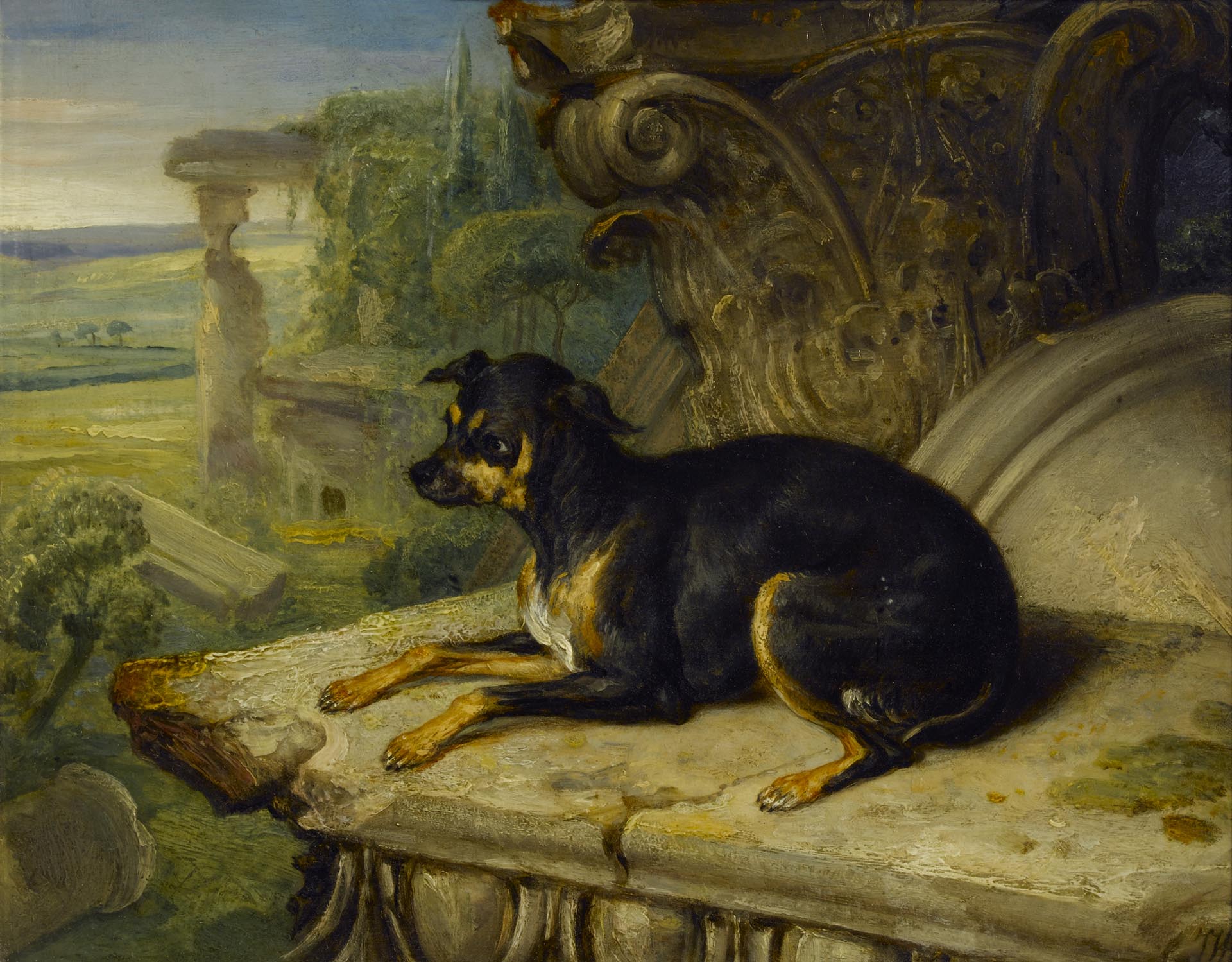
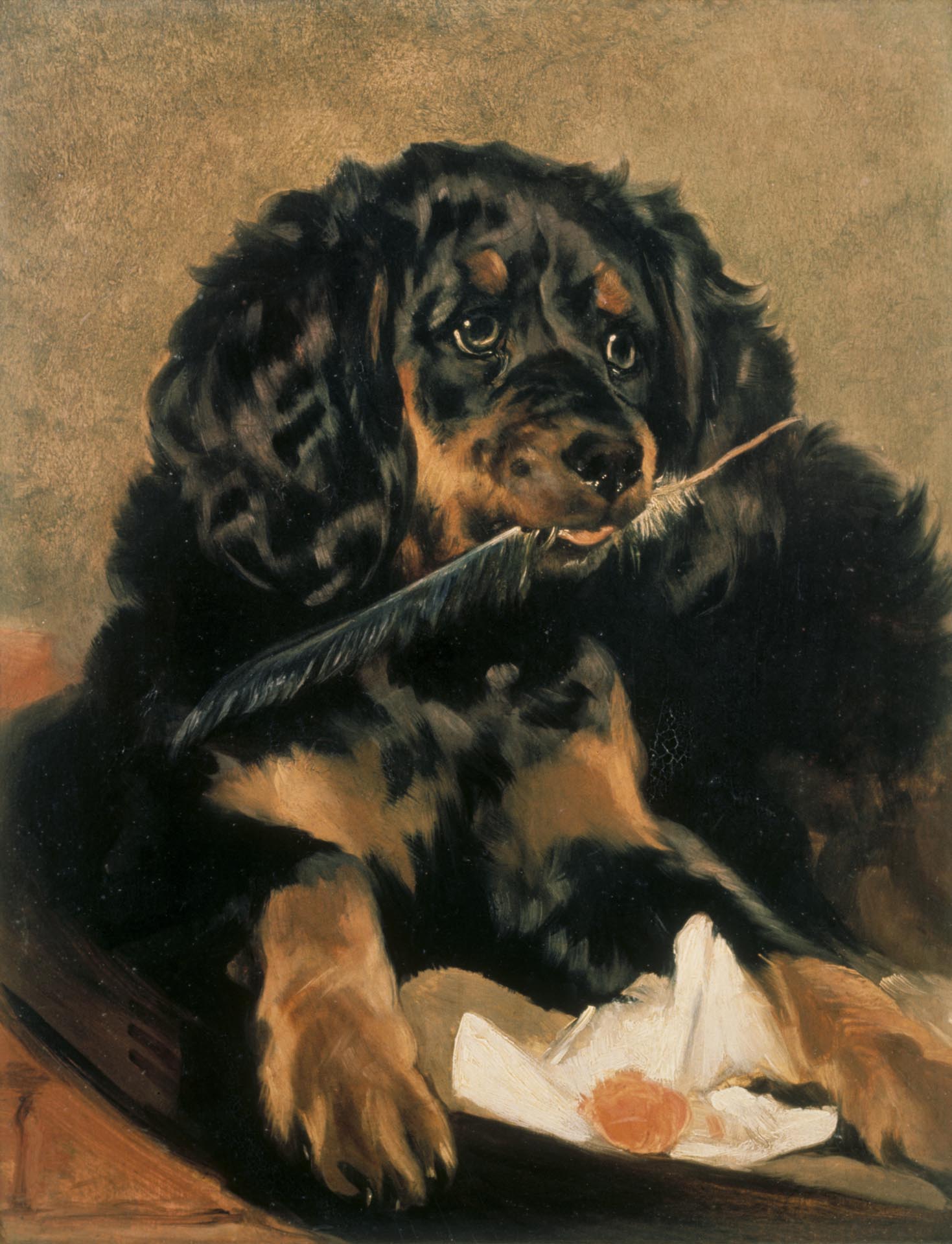
To keep them forever
The exhibition also studies the special connection we have with dogs in life and when they pass away. Victoria era, although not the queen personally, brought into fashion an ancient tradition of preserving the remains of beloved pets via taxidermy. This expensive undertaking was primarily done by affluent Britons. At Wallace Collection two stuffed pets, including a Maltese dog, welcome visitor of the show.
Richard Wallace and Shipe
Interestingly during research work for the exhibition, information was discovered about the dog that belonged to one of the Wallace Collection founders, Richard Wallace. He had a dog called Snipe, who travelled with him everywhere and was his close companion. Mr Wallace even had Snipe photographed by one of the leading 19th century photographers, and this photo features in the exhibition.
Hockney’s dachshunds
Finally, a suite of vivid paintings from 1995 share a series of affectionate vignettes of David Hockney’s dachshunds, Stanley and Boodgie. They are a touching testament to the role the dogs played in his life from the moment he adopted them in 1987. By portraying the two dogs sleeping, or at rest on their vibrantly coloured cushion, Hockney creates a strong sense of intimacy and immediacy.
This ultra-positive and warm exhibition gives you a very comforting feeling that the dogs has been, and continuous to be, an inspirational and well appreciated model both in life and art.
Portraits of Dogs: From Gainsborough to Hockney will be on view at the Wallace Collection in London until October 15. Tickets can be found here.
Image credits: © Wallace Collection and Gareth Gardner


